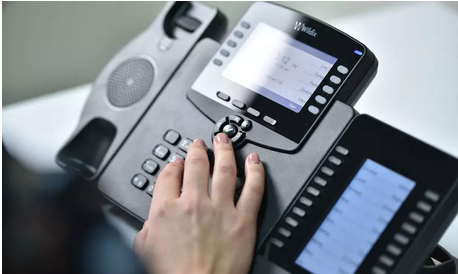
The Business Phone Systems has come a long way since Alexander Graham Bell first invented it in 1876. The very first commercial telephone exchange was opened in New York City in 1878, and the initial long-distance call was created between New York and Boston in 1884. Businesses quickly saw the potential of the telephone and started utilizing it for communication between employees, customers, and suppliers.
The real history of Business Phone Systems is really a long and complicated one, with many several types of systems emerging within the years. Early systems were based on copper wire technology, which was eventually replaced by digital systems that could transmit data over long distances. Business phone systems have evolved as time passes to include features such as for instance voicemail, caller ID, and call forwarding, which have made them a vital section of any modern business.
The initial Phone Systems for Business were predicated on copper wire technology. These systems were limited inside their power to transmit data over long distances, and these were also prone to interference from other copper wire systems. This type of system was eventually replaced by digital systems, which could transmit data more reliably over long distances.
Digital business phone systems emerged in the 1980s, and they quickly became the standard for business phone systems. These systems use digital signals to transmit data, allowing for clearer conversations and fewer dropped calls. Digital business phone systems also offer features such as caller ID, call waiting, and call forwarding, which can be incredibly ideal for businesses.
The very first business telephone system was the private branch exchange (PBX), that was introduced in 1891. The PBX allowed businesses to possess their particular private telephone network and to produce calls between employees without going right on through the public telephone network. PBX systems were initially manual, with operators connecting calls between employees, nevertheless they soon became automated.
In early 1900s, the telephone was used mostly for voice communication. But since the technology improved, businesses started initially to utilize it for data communication as well. The initial business telephone system to provide data communication was the Automatic Message Switching System (AMSS), that was introduced in 1965. The AMSS allowed businesses to send data messages between employees using the same telephone lines which were useful for voice communication.
Hosted VOIP business phone systems are the most recent type of business phone system, and they offer many advantages over traditional systems. VoIP systems use internet protocol to transmit data, which means they can be combined with any internet connection. This type of system also offers features such as voicemail, caller ID, and call forwarding. VoIP business phone systems are becoming increasingly popular, while they provide a cheaper choice for businesses that require a dependable phone system.
Today, business telephone systems tend to be more sophisticated than ever before. They offer many different features that allow businesses to communicate in ways which were extremely hard in the past. Business telephone systems is now able to be useful for voice, data, video, and conferencing. They may also be used to get in touch to the Internet and to send and receive faxes.
For more details check out Phone Systems for Small Business.
No comments:
Post a Comment